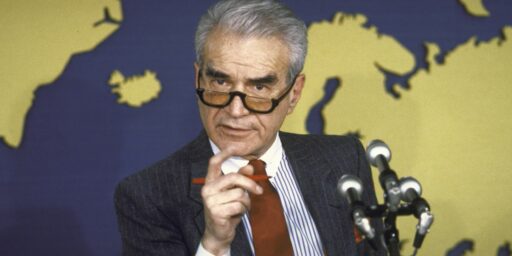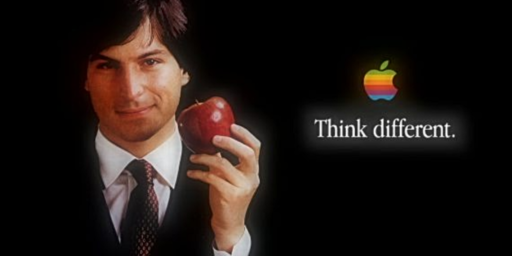BOGUS TRENDSPOTTING
Jack Shafer is tired of bad reporting.
Whenever I read the words “emerging trend” in a news story, I reach for my revolver. Most trendspotting articles–especially those appearing in newsless August–are bunk. The example on Page One of this morning’s USA Today, “More Parents Are Leaving School Shopping to the Kids” shrieks bunk so loudly that I had to empty all six chambers to silence it. True to the trendspotters’ formula, the piece’s author, Bruce Horovitz, fields a few statistics, tosses out a few convenient anecdotes, and notes a potential countertrend before arriving at his dubious conclusions.
He then delivers a proper fisking of the piece.
Shafer also debunks two stories I mentioned yesterday:
Retired Associate Press reporter Walter Mears, a Pulitzer Prize winner whose memoirs come out in October, tells U.S. News & World Report the press didn’t cover up President John Kennedy’s sexual indiscretions because it didn’t know about them.
“Even if they can’t prove it, reporters trade gossip,” Mears tells U.S. News. “Even at last call in the bar, I didn’t hear any. … [H]is affairs were secret because he saw to it.”
Mears should have frequented other journalistic bars or at least had a few drinks with former CBS News reporter Marvin Kalb and New York Times reporter R.W. Apple Jr. On Page Four of One Scandalous Story, his critique of the Monicagate coverage, Kalb writes about an incident in September 1963 in which he stumbled upon the Secret Service escorting “a woman with stunningly attractive legs” up a private elevator in New York’s Carlyle Hotel–where President Kennedy was staying. The panicked Secret Service knocked Kalb flat on the floor to prevent him from getting a good view of the woman.
Kalb didn’t file a report about the knockdown or the woman. “It was my judgment at the time that such an incident was simply not ‘news,’ ” Kalb writes. He then relates a similar story by the Times’ Apple, who as a young reporter claims to have seen a beautiful woman escorted into Kennedy’s Carlyle suite in 1963. Apple returned to the Times newsroom and told assignment editor Sheldon Binn what he’d seen. “Apple,” Binn allegedly said, “you’re supposed to report on political and diplomatic policies, not girlfriends. No story.”
That the press shielded Kennedy cannot be denied. According to Scotty, John F. Stacks’ biography of James B. Reston, Reston used his power as the New York Times Washington bureau chief to spike the inquiry of one of his reporters who was investigating rumors that JFK had married before taking Jacqueline Bouvier as his wife. “I will not have the New York Times muckraking the president of the United States!” he hollered.
Well, the good news is that this is pretty much what I was telling my students for years, as it comported with everything I had read. I guess the moral is not to be so easily taken in by a single contradictory report.
This one, too, is worth noting:
An exhausted nation is turning away from TV news, asserts New York Times TV reporter Jim Rutenberg today in “Suffering News Burnout? The Rest of America Is, Too.” Rutenberg bases his conclusion on numbers provided by Nielsen Media Research. According to Nielsen, the number of people watching the three evening network newscasts each night, on average, in June and July was 24.1 million. Over the same period in 2002, 25.2 million tuned into the broadcasts, and in 2001, 24.3 million did so.
How big a deal is the loss of 1.1 million viewers from 2002? Or the relatively small decline of viewers–200,000–between 2001 and 2003?
“It’s not a significant shift” in viewers, says Anne Elliot, vice president of marketing and communications at Nielsen. Nielsen doesn’t count viewers; it estimates them based on the 5,100 People Meters attached to TV sets that measure the TV consumption of the 14,000 to 15,000 people in those households. As with any scientific sample, there is a margin of error built into Nielsen’s estimates. Different Nielsen estimates have different margins of error, Elliot says, and while she couldn’t cite the margin of error in this particular example, she cautioned against extrapolating too much from the raw numbers.
Ah, well.





